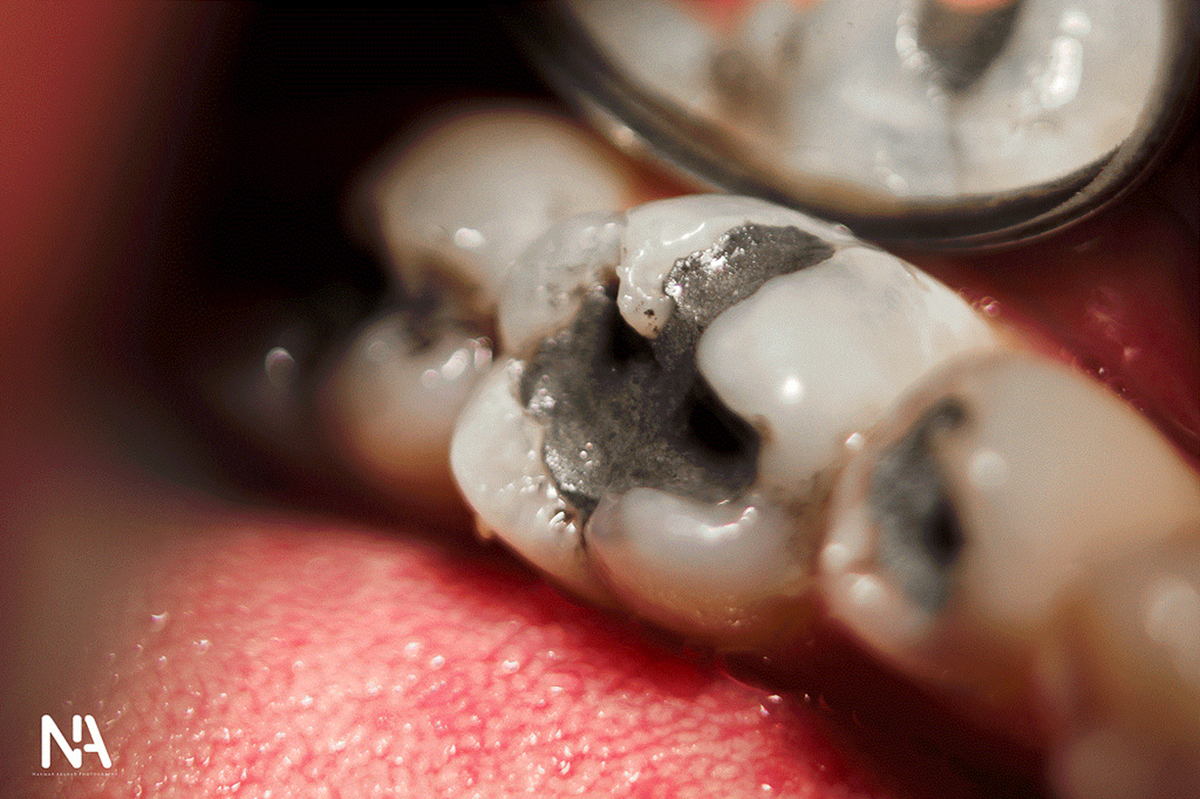Tooth decay or dental caries is one of the most common afflictions that affect the teeth. In fact, almost everyone you know would have had at least one filling done at some point in their life. There is a lot of fear attached to dental treatment because of the drilling, the noise and the possibility of pain. Thankfully, though, dental fillings and the procedures associated with them have moved generations into the future and are now pretty much painless.
Fillings done at the right time can also help patients avoid more invasive treatment like getting a root canal.

Why Do You Need To Get Your Teeth Filled?
Once the tooth has started to decay, the only way to arrest the process is to physically remove it with the help of a dental drill and then "fill" the prepared cavity. The process of tooth decay progresses quite slowly in most people and can be identified through a simple visual inspection in most cases.
Thus getting a filling done has two main parts: the preparation of the cavity and the actual filling part.
READ Dental Implants as a Solution to Missing Teeth
What Are The Different Ways In Which Cavities Can Be Prepared?
The most common method to get a cavity prepared is still by using a dental drill. This drill is the subject of many a nightmare, however, the truth is quite a bit different from that perpetuated myth. The doctor will take a pre-operative X-ray in case the decay appears to be extending deep into the tooth. Beyond a certain limit of decay, it is no longer possible to save the tooth with just a filling and a root canal may have to be performed.
The drill will be used to remove the decayed tooth structure. This process may or may not be done under local anesthesia depending on the doctor’s preference, the patient and the depth of the cavity. Even if no anesthesia has been given, all that the patient feels is just a little bit of sensitivity during the entire process.
The material properties of the newer filling materials mean that the doctor only has to remove the decayed tooth structure whereas in previous years the cavity had to extend to a certain size before the filling material could be applied.
READ Oral Care: Dental Problems in Children
This required the needless sacrifice of healthy tooth structure.
The other way in which cavities are being prepared is through the use of lasers. The biggest advantage of lasers is that they do not cause any noise or vibrations that will cause discomfort to the patient. The cavity prepared with this method is exactly the same as with the dental drill.
The only disadvantage with using a laser is that it can be difficult to determine how deep the laser is actually cutting. This is not a problem when shallow cavities are being prepared or the underlying tooth is a large one since the margin of error is high but it can be a problem when the cavity lies close to the nerve of the tooth.
Different Filling Materials Used In The Teeth
Gold Fillings
Gold is actually a surprisingly effective material for fillings to be made of, however, because of its exorbitant price, gold is only used if the patient specifically demands it. The high strength, low corrosive property and excellent biocompatibility with the surrounding gums make gold the best material for fillings.
The drawback of the method is that the patient has to visit the clinic multiple numbers of times, the process is extremely technique sensitive and the final filing does not match the tooth color (which was traditionally considered unaesthetic, however, seems to be making a comeback in hip-hop culture).

Amalgam Fillings
These fillings are silver in color and thus also called silver fillings by people. The actual content of silver in the mix is quite low, though. The advantage of this type of filling is that it has excellent strength and can last a long time in the mouth.
The drawbacks, though, are plenty. It requires the use of mercury in the fillings, an element which is toxic to the human body and is also an environmental hazard. The filling cannot be used for the front teeth since it will stick out in contrast to the rest of the tooth.
The tooth also becomes discolored due to the presence of this kind of filling over a long period of time.
The amount of tooth structure to be removed for these fillings to function in the desired manner is also more than what would be considered acceptable by modern standards. These fillings remain extremely popular in developing nations since they are quite economical.
READ Dental Health: Things That Ruin Your Smile
Composite Fillings
These are tooth-colored fillings which are currently the most accepted kind of material all over the world. The filling material is available in a variety of shades and can be matched exactly to the tooth being restored.
This property makes it perfect for repairing chips and nicks to the front teeth. The material composition also varies and thus variants are available for use in the back teeth where they will be subjected to high forces, while some are geared towards providing the best esthetics.
These materials bond to the tooth via a process of etching carried out just prior to application of the material. The dentist can thus preserve as much of the healthy tooth structure as possible since retention of the filling is not dependent on a particular shape.
The only disadvantage of this kind of filling is that there can be some amount of shrinkage at the corners of the material, leading to a micro gap through which bacteria can pass and cause damage to the underlying tooth structure.
READ Impact Of Poor Dental Health
Conclusion
Most dental offices nowadays do not do any other kind of permanent tooth fillings other than tooth-colored fillings. The material technology has now progressed to a point where esthetics and strength can both be achieved at the same time.
The convenience to the doctor and the patient while getting composite fillings done is also something that other procedures just do not come close to matching.
- www.colgate.com/en/us/oc/oral-health/procedures/fillings/article/what-is-a-filling
- www.colgate.com/en/us/oc/oral-health/procedures/fillings/article/types-of-fillings
- www.dentalfearcentral.org/faq/fillings/
- Photo courtesy of ashl33: www.flickr.com/photos/ashl33/3379872779/
- Photo courtesy of ashl33: www.flickr.com/photos/ashl33/3379872779/
- Photo courtesy of Nauman Asrad photography: www.flickr.com/photos/68799246@N07/9717693450/


Your thoughts on this